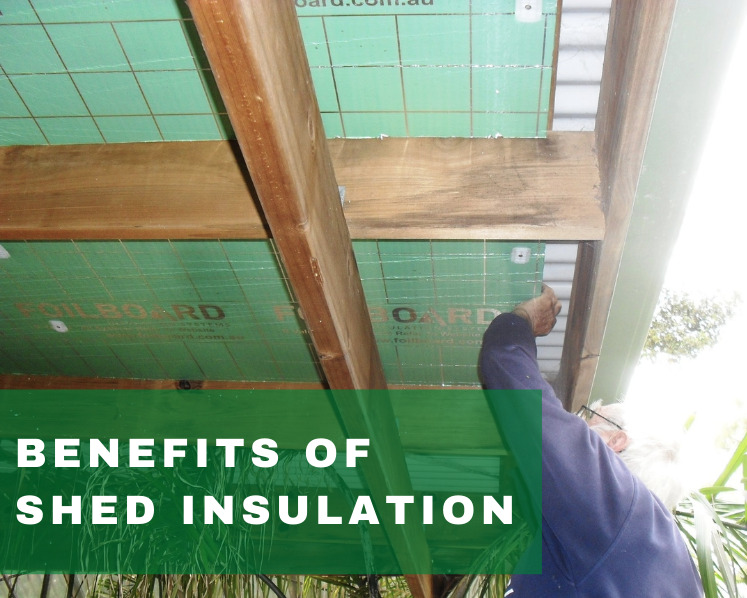
Insulting your home and taking steps to stay warm is a great way to reduce electricity costs. Instead of turning up the heater to regulate the inside temperature during winter, a well-insulated and sealed home will help lower the need to heat up the property as often. An insulated property will minimise heat transfers that occur from within the property to the external environment. This will enable heat to be retained inside the property so that the temperature stays relatively stable. A well-known and versatile insulation material is foil insulation panels that are rigid, customisable and easy to install. Foilboard panels can be applied to underfloor insulation, cathedral ceiling insulation, wall insulation and garage insulation.
Foilboard rigid insulation panels help to improve the thermal efficiency of the property. Unlike traditional bulk insulation and insulation batts, the Foilboard slim profile makes it the ideal thermal insulation and vapour barrier. With its superior thermal performance, it ensures that a continuous ‘esky’ effect applies to the property all year round. Foilboard rigid panels seal the property with a permanent thermal and moisture barrier improving the thermal resistance of the property which reduces the reliance on heating, saving money and our precious energy resources.
Even with insulation, you still need to take care during the winter and stay warm. Here are a few tips and tricks that you can consider that will help you rely less on heating appliances and lower your electricity and gas bills.
- Wrap up and stay warm: Most people forget to wrap up during winter. Many will continue to wear light clothing, shorts and other summer outfits that will not help you stay warm. Make sure your wardrobe caters to Australia’s winter climate and have a couple of jumpers, long pants, scarves, beanies and gloves. Not only will this help you retain your body heat, but help you avoid contracting the nasty common cold!
- Seal your property: Insulating your property can only prevent so many heat transfers. Heat transfers can also take place through doors, windows, cracks in walls and many other places. Engage a builder with expertise in preventing draughts through your property. They will audit your property and recommend improvements that will seal your property for the better. There are many ways to seal your property, and a few DIY tricks can really help!
- Draw curtains: Curtains, blinds and awnings can help to retain heat within a property during the night and allow the sun to penetrate throughout the property during the day. Make sure you close and open them respectively to maximise the warmth of your property.
- Clean your heating unit: We are not recommending that you do not use your heater during winter! However, make sure you use it efficiently. Ensure that your heating unit is clean so that it operates effectively and does not use excess electricity during operation. A professional is recommended so that no damage is caused to your heating unit.
- Move your furniture: By moving closer to the heating source or away from a cool area of the property, you can stay warm for longer without having to turn up the dial on the heater. Consider the position of your dining table, lounge, study table, bed or other furniture item that you use regularly throughout the day. A reshuffle can also add a new perspective to your home!
- Stay active: By staying active your body will generate heat which is good for your health and will help you stay warm. Remember to walk around, go out into the garden, change up your routine and keep on moving. Staying still for prolonged periods of time is not healthy and your body temperature will fall.
- Turn down the dial: By lowering your heater’s temperature setting, you can save a considerable amount of electricity for each hour the heater is on. This is proven, given heaters consume a lot of electricity during start-up and during operation. Make sure you act reasonably when using your heater, because it is not a free service!
Foilboard offers a range of home and business insulation solutions in Australia. Visit our website to browse all products or call the team to identify the right insulation product for your needs on 1800 354 717. Using rigid insulation panels for your property is the best way to insulate your property and low your energy costs during winter!
Insulating Your Home in Winter FAQs
Question: How can I insulate my house in the winter?
Answer: There are many ways to insulate your house in winter. Using rigid foil insulation panels is a great way to insulate all parts of your property including the underfloor, roof and walls. Each application will require a different R-value.
Question: Which insulation would best keep a house warm in winter?
Answer: We recommend rigid foil insulation panels that can be installed into any type of property. These panels will not sag, delaminate, or allow moisture ingress. Make sure you check with us which R-value is optimal for your property.
Question: How do you keep cold air from coming through the floor?
Answer: The floor makes up a large part of the external envelope of the property. By insulating the floor, you can greatly reduce the temperature variation inside the property which is caused by the transfer of heat through the floor.
Question: How can I keep my house warm in winter without electricity?
Answer: To keep your house warm in winter without electricity, make sure your property is appropriately insulated and sealed. We recommend rigid foil insulation panels which can be installed during build or retrofitted after the build.
Related Articles
What Are The Main Benefits of Shed Insulation?
Everything You Need To Know About Caravan Insulation
7 Reasons Why having Underfloor Insulation is Important





